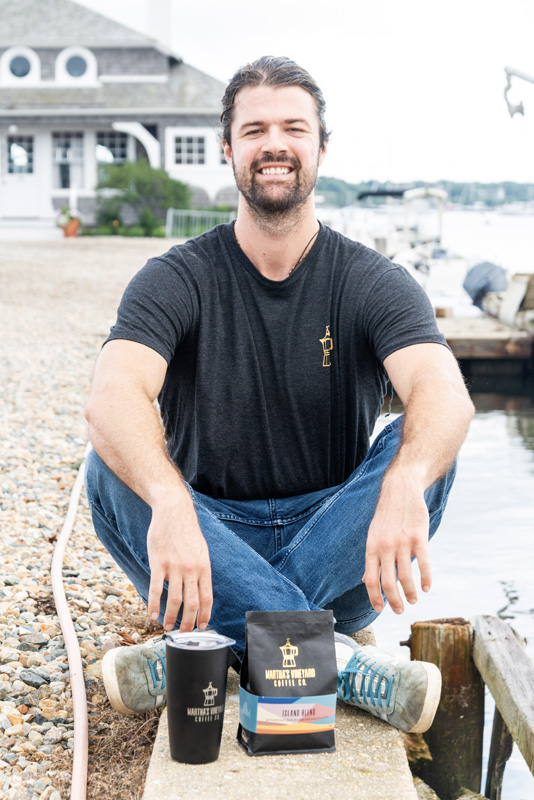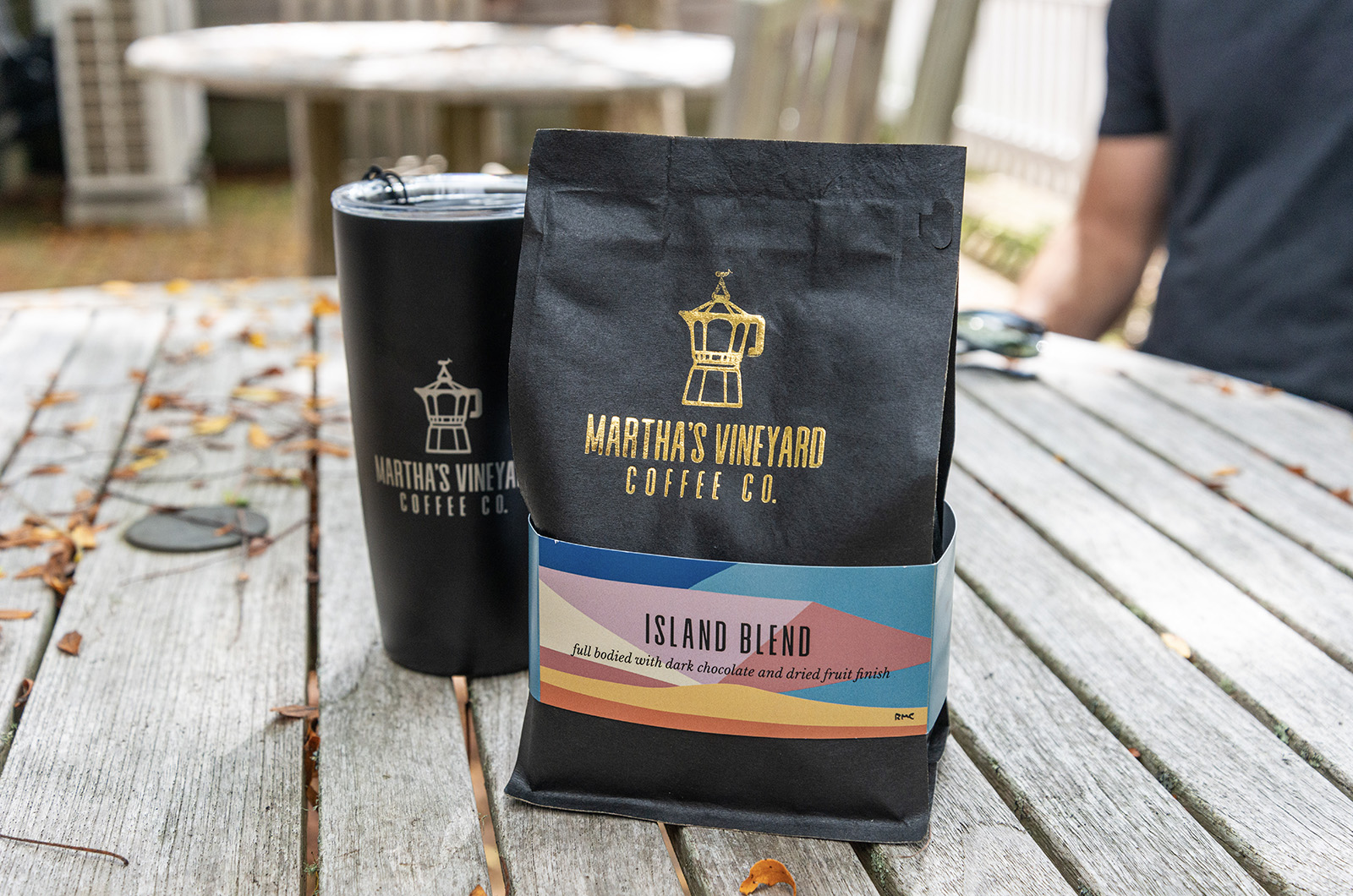Leif Iversen, founder and owner of the Martha’s Vineyard Coffee Company, doesn’t remember exactly when he took his first childhood sip of coffee, but he certainly remembers where it happened: Costa Rica.
“I had a pretty memorable cup there, with lots of milk and sugar,” he recalled. “That’s probably how they got me to like it.”
Mr. Iversen has long nurtured a connection to the Central American country, taking family vacations there while growing up on the Vineyard and going on yoga retreats there during college. Later, he went backpacking across Costa Rica, with an inkling that he might someday bring a bit of the country’s coffee culture back home.
“I really fell in love with the country and the freedom and the beauty, the nature and the people,” he said. “I had a real connection there. And that was really when I started to think about the identity of the coffee I wanted to offer.”
When Mr. Iversen started his company in 2021, offering hot coffee at summertime fairs and beans at markets across the Island, he expanded his scope to source beans from across Central and South America. That style of combining beans from different sources to make a coffee blend, he said, is a common way to develop a brew’s intended flavor.
“With a blend you’re taking multiple coffees, which...may lack some characteristics alone, but putting them together gives you a well-rounded cup,” he said.
In his Island Blend coffee, Mr. Iversen said he combines beans from Colombia and Guatemala for different flavor characteristics.
But though bean blends have their advantages, Mr. Iversen said the combination can also obscure the particular taste of one farmer’s growing process.
“The end product won’t be a reflection of that one farmer’s work, that attention to detail, that mastery of their craft,” he said.
To bring that attention to detail back into his beans, Mr. Iversen returned his focus to one area of Costa Rica, the coffee growing zone of Tarrazú, located in its mountainous central valley, where hot tropical mornings give way to cool evenings.
“Costa Rica has some of the most microclimates in the world,” Mr. Iversen said, an impressive trait for a country roughly the size of West Virginia. “There’s five towns in the region, and pretty much everything revolves around coffee.”
Since visiting the region, Mr. Iversen has begun collaborating with two Tarrazú farms, Finca Temática and El Chiral, to offer direct trade beans on-Island.
“We go down there and meet with the farmers directly,” he said, to learn about their growing and drying methods.
Each coffee bean starts out its life as a little red “cherry” inside of which are two light-green seeds. The farmers pick the cherries, strip off the flesh, dry the green seeds (or coffee beans) and ship them off to Mr. Iversen, who roasts them on-Island.
In the past two years of being in the Vineyard coffee business, Mr. Iversen said, he has seen much success, with his beans now available in 15 stores.
“I think that is really special for the Island community to buy a product from someone they actually know,” he said.
Though he has dreams of one day opening a café on the Vineyard, for now Mr. Iversen is focused on more immediate planning — working to get a bigger roaster and to improve the mobile setup for the fairs where he sells his brew.
“It’s a young company, so I’m still building my foundation,” he said. “It’s a slow growth process, you know. Sometimes it’s really as simple as that.”






Comments (1)
Comments
Comment policy »